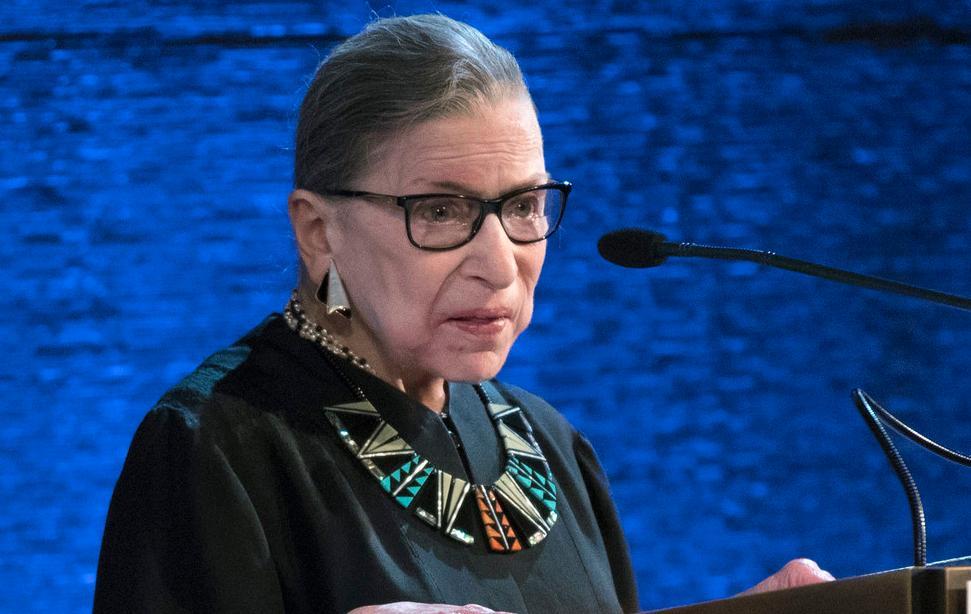Ruth Bader Ginsburg and the US Supreme Court

Ruth Bader Ginsburg was a member of the U.S. Supreme Court from 1993 until her death in 2020. She was also known under the nickname the Notorious RBG, or just as RBG.
Ruth Bader Ginsburg was an important part of the women’s movement of the 1970s when she, as an attorney, tried several anti-discrimination cases before the Supreme Court. Winning most of these cases, she changed the way women were treated and helped women gain more equality in society.
Bader Ginsburg studied law at Harvard University, where she edited the Harvard Law Review, before transferring to Columbia University. She finished in joint first place in her class, but no law firm in New York would hire her because she was a woman. Ruth Bader Ginsburg therefore became a law school professor. In the 1970s she worked with the American Civil Liberties Union, as an attorney and was on its board of directors. Her work with the American Civil Liberties Union made a great contribution to ensuring women equal rights in society.
In 1980 President Jimmy Carter appointed her as a judge to the U.S. Court of Appeals for the District of Columbia Circuit. This was her job until she was appointed to the Supreme Court.
The US Supreme Court is the highest judicial body in the United States. It is made up of eight Associate Justices and one Chief Justice. Members of the Supreme Court serve until they resign, retire, are impeached and convicted, or die. A candidate for the Supreme Court is chosen by the President and must be confirmed by the US Senate.
The Supreme Court plays an important role in U.S. democracy. It oversees the work of Congress and the President. It is the highest court of appeal for legal cases. The Supreme Court also ensures that laws and legal practices are in keeping with the US Constitution.

We may like to believe that the law is objective and unchanging, independent of time and political views. It may seem strange then that it would matter what political party the President who appoints a Supreme Court Justice belongs to. In reality the law is always subject to interpretation. For example, in 1896, in the ruling Plessy versus Ferguson, the Supreme Court stated that it was legal to segregate black people from white people on public transportation, leading to the United States becoming a segregated society for over 50 years. In 1954, in the ruling Brown versus Board of Education, the Supreme Court ended segregation.
The Supreme Court’s role is to interpret the law in keeping with the public's sense of justice. What a person regards as fair and just will be related to their political views. Should there be rehabilitation or harsh sentences for criminals? Should women have a right to choose an abortion, or is all life sacred? Is all taking of life wrong, or is the death penalty justified in some cases? Should citizens have a right to bear arms, or can there be laws limiting gun ownership? These are just a few examples of cases where a justice's political views may influence their decision.
Political balance of the Supreme Court is not guaranteed, as it is largely up to coincidence if a President will get to appoint a Supreme Court justice or not. Bader Ginsburg was appointed at a time when the Democratic party had a majority in the Senate. However, she was confirmed by a vote of 96-3, meaning most Republican senators also voted to confirm her for the job.
As a liberal justice Bader Ginsburg often found herself in the minority when ruling on cases, as conservative judges were in the majority. She would then write a dissent to the ruling, explaining her position. These dissent papers resonated with many people, who felt she was the one who was speaking for their view of justice. Her dissents also influenced the work of Congress, leading to some laws being changed in keeping with her views.
On 18 September 2020 Ruth Bader Ginsburg died. She was 87 years old. Her death meant an opening on the Supreme Court which Republican President Donald Trump announced he would fill before the Presidential election in November. This stirred up much controversy as it was Bader Ginsburg’s expressed wish that her replacement be chosen after the election.
Learn more about Ruth Bader Ginsburg by watching this CNN Films documentary about her life:
Related content
Tasks related to the article about Supreme Court Justice Ruth Bader Ginsburg